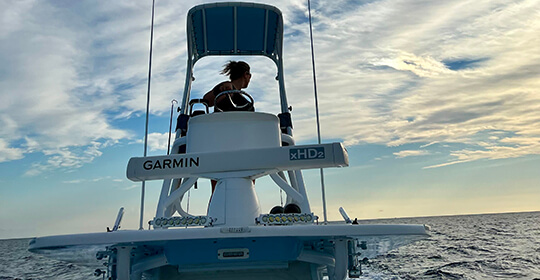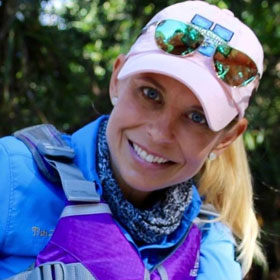How to Work on Challenging Gender Stereotypes in Fishing
By Debbie Hanson
Feb 24, 2025
Women are consistently breaking down barriers in the outdoors, but we still have some work to do when it comes to challenging gender stereotypes in fishing. This means that it’s important for all of us to take an active role in making fishing communities more inclusive. Consider these ways to work on changing outdated mindsets by creating a safe and welcoming environment for empowering female anglers.

1. Amplify Women’s Voices in the Fishing Community
Representation matters. Celebrate and amplify the voices of women in the fishing community. Share their stories on social media, think of them when media opportunities come up, and invite them to local meetups or fishing related events. By fostering a diverse and inclusive fishing community, we can make greater strides when it comes to challenging gender stereotypes.
2. Redefine the Marketing of Fishing Gear
Many fishing advertisements and products are targeted to men, which can reinforce stereotypes. Women don’t often see themselves represented in marketing materials or ad campaigns. When challenging gender stereotypes in fishing, support brands that create gender-neutral or inclusive marketing programs. Advocate for gear that fits a wide range of body types and preferences so that everyone feels comfortable and confident on the water.
3. Support Women’s Fishing Clubs and Organizations
Join or help spread the word about groups that are focused on empowering women in outdoor recreation, such as the International Women’s Fishing Association, Gulf Coast Lady Anglers, Casting for Recovery, and Fishanistas. These organizations are focused on promoting female angler representation through education, networking, and community-building. By supporting them, you can help contribute to a ripple effect of inclusion.
4. Challenge “Man vs. Nature” Narratives
Fishing is often viewed as man conquering nature. Individuals learn how to fish for a variety of reasons. Shift the narrative toward mindfulness, conservation, connection with nature, and connection with other like-minded anglers. This broader view appeals to a more diverse audience, contributes to empowering female anglers, and breaks away from stereotypical perceptions of the sport.
5. Mentor New Anglers Without Making Assumptions
When introducing someone new to fishing, avoid making assumptions based on their gender. Be encouraging and respectful of their individual learning process. Gender doesn’t determine any specific skill set or interest, and fostering a supportive environment helps everyone feel welcome.
6. Address Stereotypes and Use Unbiased Language
Be an advocate for inclusion by addressing stereotypes and biased comments when they come up. For example, challenging negative stereotypes about female anglers and unconscious bias by highlighting or providing examples of women who are skilled and accomplished in the sport.
7. Diversify Media Representation
The media—magazines, radio, television, and social media—has historically catered to a narrow demographic. Encourage the media to feature anglers of all genders, ages, and backgrounds. Seeing diverse representation helps dismantle the stereotype that fishing is “a man’s sport.” Do your part to help by spreading the word about the importance of celebrating female fishing achievements and learn more about the “Women Making Waves” initiative.
8. Host or Support Inclusive Events
Organize or support fishing tournaments, clinics, and events that promote inclusion. Offering mentorship opportunities and creating safe spaces for people of all genders can encourage more individuals to get involved in fishing and boost their confidence.
By challenging gender stereotypes in fishing, women will feel more welcome, respected, and encouraged to participate. This means amplifying diverse voices, rethinking marketing, and fostering inclusive environments. Fishing transcends gender—it’s about the joy of being on the water, connecting with nature, and building a community that supports all anglers.









